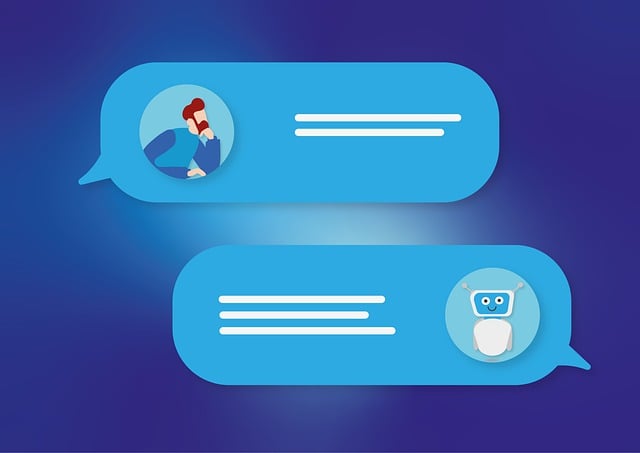Generative AI is revolutionizing e-commerce by creating advanced chatbots that personalize interactions, offer tailored product recommendations, and generate marketing content. To build an effective eCommerce AI chatbot, clearly define its scope, set aligned goals, understand user needs, and tailor the brand persona. Strategically determine question types, conversation complexity, and industry terminology to enhance user experiences and drive online business success. The architecture should be modular, scalable, and powered by machine learning models like NLP for accurate query interpretation and relevant responses, ultimately boosting customer satisfaction and sales.
Creating a generative AI chatbot can be a game-changer for e-commerce businesses seeking to enhance customer engagement and sales. This article guides you through the process, from understanding the potential of generative AI in shaping e-commerce interactions to designing, developing, and deploying your own advanced chatbot. By defining clear objectives, architecting an effective system, and ensuring robust training and testing, you can unlock the full power of an ecommerce AI chatbot to deliver personalized, efficient customer service.
- Understanding Generative AI and its Potential for E-commerce Chatbots
- Defining the Scope and Objectives of Your E-commerce AI Chatbot
- Designing and Developing the Chatbot Architecture
- Training, Testing, and Deploying Your Generative AI Chatbot for Optimal Performance
Understanding Generative AI and its Potential for E-commerce Chatbots

Generative AI is transforming various industries, and its potential for revolutionizing e-commerce is immense. At its core, generative AI models learn from vast amounts of data to create new content, be it text, images, or even code. When applied to e-commerce, these models can power sophisticated chatbots that go beyond basic customer service.
E-commerce AI chatbots equipped with generative capabilities can craft personalized product descriptions, generate recommendations based on user preferences, and even create unique marketing copy. This level of customization enhances the shopping experience, increasing customer satisfaction and engagement. Moreover, these chatbots can evolve over time as they continue to learn from interactions, ensuring that the content remains fresh and relevant in a rapidly changing market.
Defining the Scope and Objectives of Your E-commerce AI Chatbot

When creating an eCommerce AI chatbot, defining its scope and objectives is crucial for ensuring its effectiveness. Begin by identifying key user interactions that could be enhanced by automation. For instance, consider customer support queries, product recommendations, order status updates, or even post-purchase assistance. Set clear goals aligned with your business objectives; whether it’s increasing sales through personalized suggestions, improving customer satisfaction by providing instant support, or streamlining operations by handling routine inquiries.
Understanding your target audience and their needs is essential. Define the chatbot’s persona and tone to match your brand image while catering to the expectations of your customers. Determine the types of questions the chatbot should be able to answer accurately, the level of complexity in conversations it should handle, and any specific industry terminology it needs to recognize. This strategic approach ensures that your eCommerce AI chatbot delivers value, enhances user experiences, and contributes to the overall success of your online business.
Designing and Developing the Chatbot Architecture

When designing an architecture for an eCommerce AI chatbot, the first step is to define its purpose and scope. This involves understanding the specific tasks it needs to perform, such as answering product queries, providing shopping assistance, or facilitating purchases. The architecture should be modular, allowing for easy integration of new features and ensuring scalability as the chatbot’s capabilities grow.
A robust conversational flow is key to a successful eCommerce AI chatbot. Developers must design a structured yet flexible dialogue framework that can handle various user inputs and intents. Incorporating machine learning models like Natural Language Processing (NLP) enables the chatbot to understand context, interpret user queries accurately, and generate relevant responses. This ensures a seamless interaction experience, fostering customer satisfaction and driving sales in an online retail environment.
Training, Testing, and Deploying Your Generative AI Chatbot for Optimal Performance

After developing your generative AI chatbot, it’s crucial to employ a robust strategy for training, testing, and deploying it to ensure optimal performance. The training phase involves feeding your chatbot a diverse dataset relevant to its intended use case, such as an ecommerce ai chatbot that needs access to product descriptions, customer queries, and sales records. This process allows the model to learn patterns, gain context understanding, and generate accurate responses.
Testing is equally vital. Conduct thorough evaluations using various scenarios and user inputs to identify potential issues like incoherent outputs or biases in the data. Continuously refine your chatbot’s performance by iteratively updating its training data and fine-tuning parameters based on test results. Once validated, deployment involves seamlessly integrating your chatbot into relevant platforms or systems, ensuring a seamless experience for users interacting with your ecommerce platform or other services it supports.
Creating a generative AI chatbot for e-commerce isn’t just about implementing advanced technology; it’s about enhancing customer experience and driving business growth. By understanding the potential of generative AI, defining clear objectives, designing robust architecture, and rigorously testing before deployment, you can harness the power of these chatbots to provide personalized interactions, improve sales conversions, and elevate your brand in a competitive digital landscape. An e-commerce AI chatbot is not just an addition; it’s a game-changer that can revolutionize the way you engage with customers.
